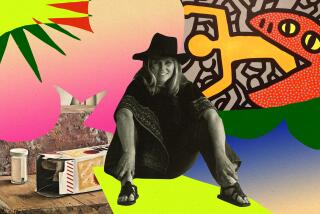A new devotion to photography
WASHINGTON — For the first time in its 63-year history, the National Gallery of Art is permanently dedicating galleries to photography, giving prominence to the work of Alfred Stieglitz, Walker Evans, Man Ray, Paul Strand and Ansel Adams.
The photography corridor, including five galleries and 3,000 square feet in the West Building, enhances Washington’s reputation as a trove of photography, adding to mother lodes at the Library of Congress, the Smithsonian, the National Archives and the Corcoran Museum of Art.
The gallery was in its infancy when a historical gift of photos came its way. In December 1948, Georgia O’Keeffe was thinking of places to put work by Stieglitz, her late husband. According to gallery lore, she liked the museum because it didn’t have “a speck of dust anywhere.”
In 1949, she donated 1,300 prints of his famous images, and later 330 more.
This “key set,” said Sarah Greenough, a curator and director of the department of photographs, represented “one print of every photograph he kept. He had cut out works that he thought were lesser. He had worked so hard to establish photography as fine art. But it did sit here for a long time.”
Over the years, the National Gallery’s holdings have grown to 8,700 photographs representing 75 American and European artists, covering the medium from its earliest days in the 1830s.
The archives include works by early practitioners such as William Henry Fox Talbot, who invented the positive and negative process of developing and printing photographs, and Julia Margaret Cameron, the amateur photographer who became a noted 19th century portraitist.
The collection is anchored by a gift of 75 photographs from Adams’ widow, and special materials by Strand, Evans, Robert Frank and Harry Callahan.
Three annual shows are planned, presenting a mix from the permanent collection and collaborations with other museums.
The first, opening Oct. 17, is a survey of Victorian-era British photographer Roger Fenton, organized with the J. Paul Getty Museum and the Metropolitan Museum of Art. Fenton was an early war photographer, visiting the front lines in the Crimean War in the 1850s.
That will be followed by an exhibition of Andre Kertesz, then one based on a gift of platinum palladium prints by Irving Penn.
More to Read
The biggest entertainment stories
Get our big stories about Hollywood, film, television, music, arts, culture and more right in your inbox as soon as they publish.
You may occasionally receive promotional content from the Los Angeles Times.










